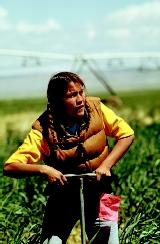
Careers in Soil Science
Careers in soil science focus on understanding, managing, and improving soil and water resources. Soil science is a true interdisciplinary science that integrates the use of biology, chemistry, physics, geology, geography, climatology, hydrology, and mathematics to describe, interpret, and manage the soil and water environment.
Traditionally, most soil science jobs were related to agriculture, but today the field has expanded to include forestry, rangelands, and especially environmental concerns in urban ecosystems. Soil is a precious natural resource, and its understanding is paramount to promoting ecosystem sustainability. Because soil is so common, it is often taken for granted. But to soil scientists, interpreting a soil pit is like reading a history book of the landscape—yet much more exciting.
Preparation for Employment
Employment opportunities are found especially in the private sector with environmental and agricultural consulting firms, but jobs also can be found with state, federal, and international agencies and educational institutions. Knowledge of soil properties and processes are important in making environmental and land-use decisions. A strong soil background helps one in making a career in land-use planning; natural resource evaluations; wetland use and protection; soil mapping; farming; forestry; ecology; sustainable agriculture; water and agrichemical management; fertilizer technology; environmental site investigations; hazardous waste specialties; geographic information systems; soil and water protection; relative-age dating of land surfaces; and evaluation of septic systems and stormwater facilities.
Academic preparation in soil science can be found in most universities that have an agricultural program. Most of these programs have been expanded to include all the nonagricultural applications of soils. In addition, courses involving soils can be found in geology, geotechnical engineering, environmental science, and geography departments at nonagricultural universities.
SEE ALSO Chemicals from Agriculture ; Desert Hydrology ; Forest Hydrology ; Geospatial Technologies ; Irrigation Management ; Land-Use Planning ; Runoff, Factors Affecting ; Septic System Impacts ; Stream Erosion and Landscape Development ; Wetlands .
Scott F. Burns
Bibliography
Kohnke, Helmut and D. P. Franzmeier. Soil Science Simplified. 4th ed. Prospect Heights, IL: Waveland Press, 1995.
Internet Resources
Soil Science Society of America. <http://www.soils.org> .
Comment about this article, ask questions, or add new information about this topic: